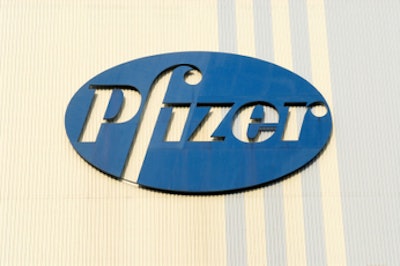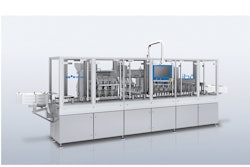
Dennis Brandl has done a lot of work with manufacturers in pharmaceuticals, packaged goods, steel, and electronics. One of his recent clients was Pfizer, where collecting and transmitting complex, multi-dimensional data quickly became an automation headache. Integrating control systems to collect the necessary data cost 10 times that of the automation components themselves—all due to interoperability issues, according to Brandl.
Brandl's work with Pfizer was in the area of process analytical technology (PAT), which refers to how to design, analyze, and control pharmaceutical manufacturing, all in the name of quality control and ultimately patient safety. In Brandl's words, PAT is “using the knowledge of the process itself to control the quality of the process.”
PAT requires collecting data that's more than just single-dimensional data such as temperature or pressure. Instead, data is complex and multi-dimensional. An example might be a particle size analyzer, which will return a distribution curve—e.g., a certain percentage of particles are one micron, another percentage are two microns, and so on. Knowing when a certain threshold of particles is a certain size indicates when a granulation process is actually finished, for example.
The 10x cost multiple for integrating instrumentation and control systems to collect this type of data is slowing down the adoption of PAT in the pharmaceutical industry, said Brandl.
OPC Unified Architecture paves the way for providing and communicating data in a standard interface. Integrating OPC-certified components would “cut Pfizer's time to integrate devices by a significant chunk,” says Brandl. “Instead of integration being 10 times the cost of the devices, it night only be one or two times the cost.”
According to its Web site, “The OPC Foundation is dedicated to ensuring interoperability in automation by creating and maintaining open specifications that standardize the communication of acquired process data, alarm and event records, historical data, and batch data to multi-vendor enterprise systems and between production devices.
Production devices include sensors, instruments, PLCs, RTUs, DCSs, HMIs, historians, trending subsystems, alarm subsystems, and more as used in the process industry, [and] manufacturing. The vision of the OPC Foundation is to provide the best technology, specifications, processes, and tools to really enable companies to build products and services that truly demonstrate multi-platform multi-vendor secure reliable interoperability.”
End user perspective: Why certification matters
Speaking from the perspective of automation end users like Pfizer, Brandl says, “We want to have assurances in place that the pieces that are supposed to work together actually work together. Before now, there was no independent way to make sure vendors implemented the OPC UA standard in the same way. That meant there was a lot of integration effort on the end user side” to iron out interoperability problems.”
The advantage of OPC's certification lab is that, “If [a product] passes the test, we have a strong assurance of interoperability, and we don't have to worry” about spending time getting devices to work with one another.
Will certification become a purchasing driver? “I think it will as certification becomes much more common,” says Brandl. “Once you get a critical mass, say 10 to 15 percent of vendors certified, there will be strong pressure on everyone else, it will become a stopping point” for purchasing a given product that lacks OPC certification. “If you don't have it you may not be able to get the jobs,” says Brandl.
“[Certification] is something that has been needed,” Brandl adds, “and I'm really glad to see OPC Foundation is taking the time and effort to make sure things that are supposed to work together actually work together.”
-David Newcorn, vice president, Summit
Brandl's work with Pfizer was in the area of process analytical technology (PAT), which refers to how to design, analyze, and control pharmaceutical manufacturing, all in the name of quality control and ultimately patient safety. In Brandl's words, PAT is “using the knowledge of the process itself to control the quality of the process.”
PAT requires collecting data that's more than just single-dimensional data such as temperature or pressure. Instead, data is complex and multi-dimensional. An example might be a particle size analyzer, which will return a distribution curve—e.g., a certain percentage of particles are one micron, another percentage are two microns, and so on. Knowing when a certain threshold of particles is a certain size indicates when a granulation process is actually finished, for example.
The 10x cost multiple for integrating instrumentation and control systems to collect this type of data is slowing down the adoption of PAT in the pharmaceutical industry, said Brandl.
OPC Unified Architecture paves the way for providing and communicating data in a standard interface. Integrating OPC-certified components would “cut Pfizer's time to integrate devices by a significant chunk,” says Brandl. “Instead of integration being 10 times the cost of the devices, it night only be one or two times the cost.”
According to its Web site, “The OPC Foundation is dedicated to ensuring interoperability in automation by creating and maintaining open specifications that standardize the communication of acquired process data, alarm and event records, historical data, and batch data to multi-vendor enterprise systems and between production devices.
Production devices include sensors, instruments, PLCs, RTUs, DCSs, HMIs, historians, trending subsystems, alarm subsystems, and more as used in the process industry, [and] manufacturing. The vision of the OPC Foundation is to provide the best technology, specifications, processes, and tools to really enable companies to build products and services that truly demonstrate multi-platform multi-vendor secure reliable interoperability.”
End user perspective: Why certification matters
Speaking from the perspective of automation end users like Pfizer, Brandl says, “We want to have assurances in place that the pieces that are supposed to work together actually work together. Before now, there was no independent way to make sure vendors implemented the OPC UA standard in the same way. That meant there was a lot of integration effort on the end user side” to iron out interoperability problems.”
The advantage of OPC's certification lab is that, “If [a product] passes the test, we have a strong assurance of interoperability, and we don't have to worry” about spending time getting devices to work with one another.
Will certification become a purchasing driver? “I think it will as certification becomes much more common,” says Brandl. “Once you get a critical mass, say 10 to 15 percent of vendors certified, there will be strong pressure on everyone else, it will become a stopping point” for purchasing a given product that lacks OPC certification. “If you don't have it you may not be able to get the jobs,” says Brandl.
“[Certification] is something that has been needed,” Brandl adds, “and I'm really glad to see OPC Foundation is taking the time and effort to make sure things that are supposed to work together actually work together.”
-David Newcorn, vice president, Summit





















